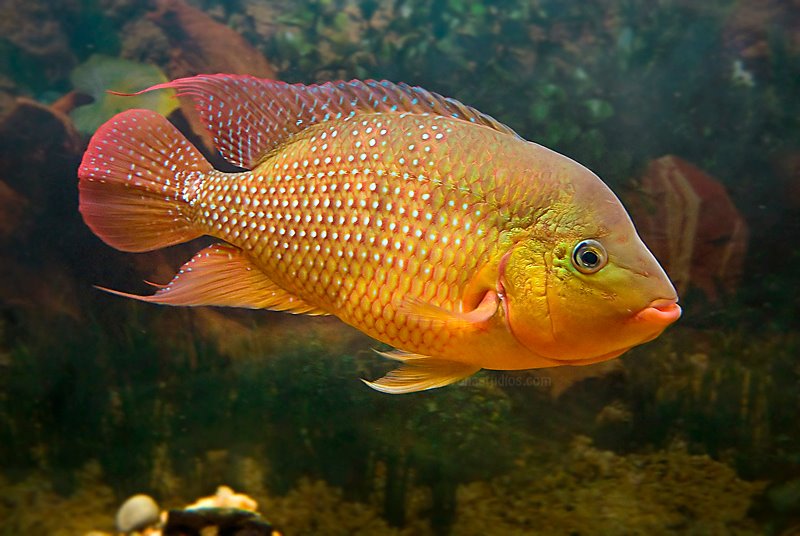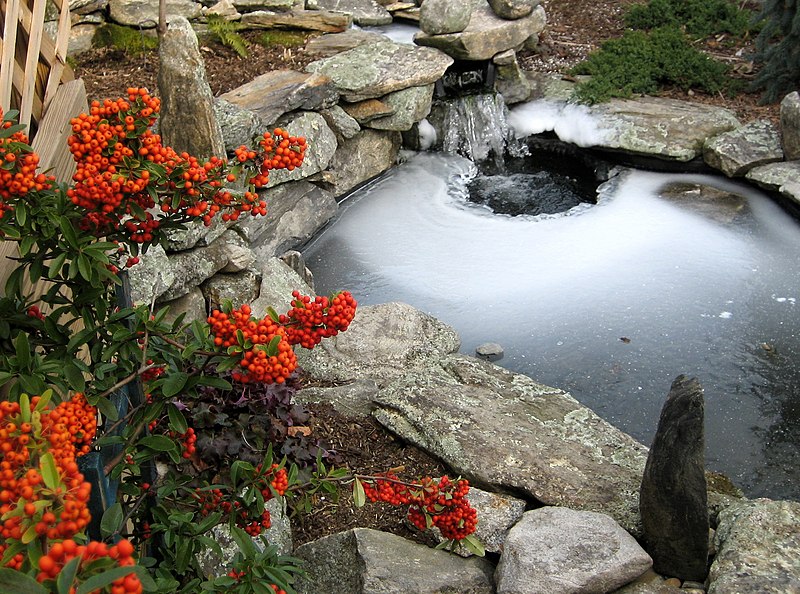The team here at That Fish Place – That Pet Place would like to take a moment to wish all of our readers a Happy Holiday and a great New Year. Thank you for reading our blog – we hope to see you back soon!
Author Archives: marinebioblog
Feed SubscriptionNatural Solutions to Common Freshwater Aquarium Infestations – Food for Thought
 If you’ve been an aquarium keeper for any significant length of time, you know that unexpected things can appear in your aquarium seemingly overnight. You may not know where they’ve come from, but suddenly you’re faced with overwhelming numbers of “alien” invaders in your tank, creeping, crawling and swimming all over. Your immediate instinct may be to search for a quick chemical solution to eradicate the unsightly pests, but isn’t it safer for your fish and the aquarium habitat as a whole to solve the problem naturally? We discussed eliminating the causes of some of these critters as natural remedies in other articles, but this time we’ll take another approach…the possibility of finding and adding natural predators to the pest species you’re struggling with. It’s important to keep in mind that though these creatures have been effective in the tanks of other hobbyists, you can never predict the behavior of an individual fish and you may not get the results you’re looking for. Also remember that these fish have to be compatible with the habitat you’ve created and with the other fish in your tank…if you introduce any neew fish or invert to your tank, observe them closely to make sure all of your fish are getting along.
If you’ve been an aquarium keeper for any significant length of time, you know that unexpected things can appear in your aquarium seemingly overnight. You may not know where they’ve come from, but suddenly you’re faced with overwhelming numbers of “alien” invaders in your tank, creeping, crawling and swimming all over. Your immediate instinct may be to search for a quick chemical solution to eradicate the unsightly pests, but isn’t it safer for your fish and the aquarium habitat as a whole to solve the problem naturally? We discussed eliminating the causes of some of these critters as natural remedies in other articles, but this time we’ll take another approach…the possibility of finding and adding natural predators to the pest species you’re struggling with. It’s important to keep in mind that though these creatures have been effective in the tanks of other hobbyists, you can never predict the behavior of an individual fish and you may not get the results you’re looking for. Also remember that these fish have to be compatible with the habitat you’ve created and with the other fish in your tank…if you introduce any neew fish or invert to your tank, observe them closely to make sure all of your fish are getting along.
Snails
Whether you have live plants in your tank or not snails can appear in your tank and quickly boom in population. While they have their benefits as algae eaters and detritivores, they can become a nuisance if the numbers aren’t kept in check. Generally, for common snails we recommend botia loaches including Skunk Loaches, Clown Loaches and YoYo Loaches. These fish like to indulge on young snails and snail eggs, so they can get you ahead of the problem. However, they can be pugnacious and even a little aggressive in some cases, so they may not be a good idea in a tank with very small or docile fish. True Siamese Flying Fox fish are another great solution, if you can find them in the trade. If you’re plagued with Malaysian Trumpet Snails, your options may be more limited. These snails have much tougher shells than the common little snails that sneak in on live plants, and they can only be ripped out of the shell by specialized eaters with very strong mouthparts. While the loaches may be able to handle very small Trumpet snails, larger versions will be too tough. Some cichlids, including several Julidochromis species develop a taste and talent for eating snails, and C. rhodesii is also a known specialized feeder for trumpet snails. Read More »
How Diet, Lighting and Other Factors Can Influence The Appearance of Aquarium Fish
 Dedicated aquarists pour their hearts and souls into creating thier own versions of breathtaking aquatic displays. Countless hours are dedicated to precise placement of wood, rock and other ornaments, painstaking pruning of live plants, and, of course, to testing and maintaining the water quality to provide the healthiest environment possible for the stars of the show: the fish! The ultimate goal is to have brilliant, beautiful, healthy fish to observe, and just about every other aspect of the tank contributes to the appearance of the livestock you keep. While the conditions that favor each species vary, you can provide the necessary factors to tweek the colors they show and make your fish look their best.
Dedicated aquarists pour their hearts and souls into creating thier own versions of breathtaking aquatic displays. Countless hours are dedicated to precise placement of wood, rock and other ornaments, painstaking pruning of live plants, and, of course, to testing and maintaining the water quality to provide the healthiest environment possible for the stars of the show: the fish! The ultimate goal is to have brilliant, beautiful, healthy fish to observe, and just about every other aspect of the tank contributes to the appearance of the livestock you keep. While the conditions that favor each species vary, you can provide the necessary factors to tweek the colors they show and make your fish look their best.
Understanding Fish Coloration
The inner layer of each fish’s skin contains color cells called chromatophores. Some chromatophores produce melanin, providing brown or black pigmentation. Some are capable of storing carotenoids which provide brilliant red, orange, and yellow pigments that come largely from foods the animals eat. Then there are iridophores, that contain crystalline deposits that reflect and bend light and giving the illusion of silvery, white, or metallic blue and green pigmentation. Read More »
Winter is Coming – Cold Weather Pond Prep
 Say what you will about the changing of seasons, getting to watch the leaves turn from green to shades of red and yellow, and partaking in what are arguably the best holidays of the year (Halloween, Thanksgiving, and that one where we all go shopping), but going into winter is a pain in the pond! Well, this blogger is here to help you overcome your winter-time woes with some helpful reminders of how to get your outdoor pond ready for the winter.
Say what you will about the changing of seasons, getting to watch the leaves turn from green to shades of red and yellow, and partaking in what are arguably the best holidays of the year (Halloween, Thanksgiving, and that one where we all go shopping), but going into winter is a pain in the pond! Well, this blogger is here to help you overcome your winter-time woes with some helpful reminders of how to get your outdoor pond ready for the winter.
Now, obviously we don’t all live in the same climate; so this blog will likely only be helpful for folks who actually get to experience a winter and all the glorious tribulations it has to offer: freezing weather, snow showers, etc. Those of you lucky enough to only need a light jacket through winter months can move right along with your “lows in the 60’s” weather! If, on the other hand, you actually own a snow shovel, then let’s work on getting that pond ready for the winter with 4 easy-to-follow steps:
Ice is bad, m’kay?
One of the worst things you can let your pond do is completely freeze over when the temperatures drop. If there is no opening in the ice, then there is no gas exchange going on. Your fish might be hibernating, but they still need oxygen to breathe and your pond still needs to release carbon dioxide. Does the whole pond need to be ice free? Of course not! A little hole in the ice would be satisfactory. This can be accomplished two ways: by using an air pump or a de-icer.
Air pumps pump air into the pond, creating bubbles to disrupt the surface of the water and preventing ice from forming. Air pumps are also a nice investment because they are useful in the summer for extra oxygenation when the temperatures rise. Read More »
ThatPetPlace.com Awarded Google Trusted Store Badge
That Fish Place – That Pet Place has earned the Google Trusted Store badge for demonstrating a track record of on-time shipping and excellence in customer service. The badge is displayed across the site to remind you, as our consumers, that you can shop from thatpetplace.com with confidence and with Google’s free purchase protection. If there is an eligible issue that comes up with your order and you cannot resolve it with the merchant to your satisfaction, Google will work with you and the merchant for a resolution. You can read more about this award here.
 That Fish Blog – Aquarium Advice and Information
That Fish Blog – Aquarium Advice and Information

